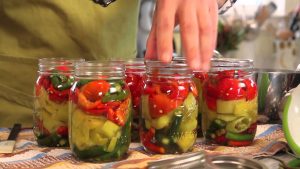A couple of years ago I ran into a barfblog reader who commented to me, ‘You’re really scared of botulism, aren’t you?’ This wasn’t a random question, it was related to a few things I had posted following over 20 illnesses linked to a potluck dinner at Cross Pointe Free Will Baptist Church in Lancaster, Ohio.
Scared isn’t how I would describe it. Rattled and in awe of are probably better terms. The toxin blocks motor nerve terminals at the myoneural junction, causing paralysis. It starts with the mouth, eyes, face and moves down through the body. It often results in paralysis of the chest muscles and diaphragm, making a ventilator necessary. Months of recovery follow an intoxication.
Maybe I am scared.
There isn’t a whole lot of botulism in the U.S. every year, and not all of it is foodborne – (infant botulism is more common); over the past two decades, improperly home preserved foods are the main source.
According to Punch, fourteen people, including four children, were hospitalised after a mass botulism food poisoning outbreak in southern Kyrgyzstan.
An epidemiological investigation has been conducted and all patients have received the anti-botulinum serum.
The first case of food poisoning in the city of Uzgen in the Osh region was reported on March 11.
According to preliminary data, the poisoning occurred due to eating homemade canned vegetable salad.
A month earlier, 17 people in southern Kyrgyzstan were hospitalised for the same reason.









 Don and Ben then edible cookie dough validation (or lack thereof), sour milk pancakes and backyard chicken eggs. The episode ends on a discussion of moldy, fermented rice used as a meat flavor enhancer, glitter beer and Listeria in frozen corn.
Don and Ben then edible cookie dough validation (or lack thereof), sour milk pancakes and backyard chicken eggs. The episode ends on a discussion of moldy, fermented rice used as a meat flavor enhancer, glitter beer and Listeria in frozen corn.